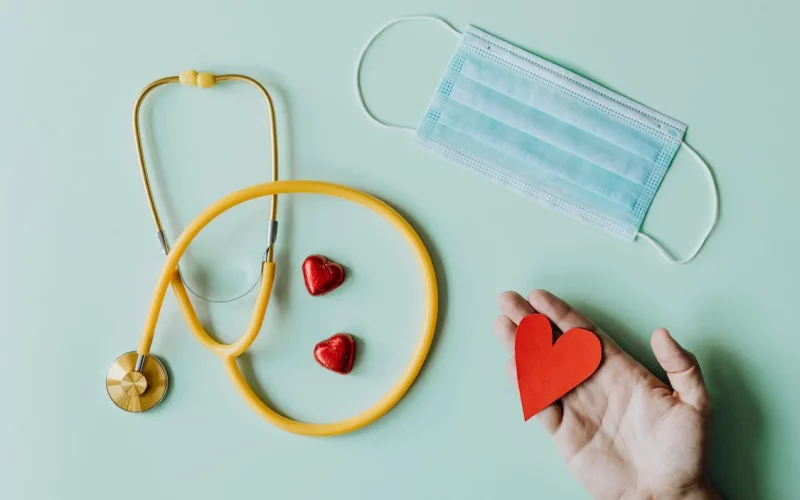Age spots are spots that usually appear on the skin after prolonged exposure to the sun. They’re harmless, but some people want them gone for cosmetic reasons. These marks are flat and darker than the surrounding skin. They can be tan, tan, or black and look like freckles. Here are the causes and symptoms of age spots and safe ways to get rid of them.
What Causes Age Spots?
Age spots are the result of the body producing too much melanin. Melanin is the pigment that gives skin its color. When skin is exposed to the sun, the body produces excess melanin to protect it from the sun’s ultraviolet (UV) rays. The more melanin is produced, the darker the skin becomes.
Age spots appear when excess melanin in the skin clumps together.
Symptoms of Age Spots
Age spots usually appear in areas of the skin that are frequently exposed to the sun, including:
– the face
– Back of Hand
– Shoulders
– the back
– Weapons
– Top of the feet
Age spots can develop singly or in clusters. They vary in size and can be 0.2 to 2 centimeters in diameter. Age spots usually appear in people over the age of 40, but they can also appear in younger people with frequent sunburns or tanning beds. These spots can form on any skin, but they are more common in people with fair skin who are more sensitive to the sun.
treatment of age spots
A doctor may suggest cryotherapy to remove an age spot. Age spots are harmless and do not require treatment. However, because they can look like skin cancer, it’s important to have a doctor examine them.
When a person wants to remove a confirmed age spot for cosmetic reasons, they have several options.
Topical creams can lighten age spots. However, avoid mercury-based whitening agents as they can pose a serious health risk. A healthcare professional can prescribe a safe product for you.
A topical cream prescribed to lighten age spots may contain:
– Retinoids such as tretinoin
– cortisone
– hydroquinone.
These creams gradually lighten the spots over time. They can sometimes irritate the skin, so it’s best to discuss side effects with a doctor before choosing the right cream.
Certain cosmetic procedures can also lighten or remove age spots. Before having a procedure, discuss your options with a dermatologist or a doctor who specializes in skin care.
The dermatologist may suggest one of the following procedures:
– Cryotherapy, in which the stain is removed with a cold substance such as liquid nitrogen
– Laser surgery or pulsed light therapy, which uses high-intensity rays
– Microdermabrasion, a non-invasive treatment that consists of exfoliating the skin
– chemical peeling, in which a chemical solution is applied to the skin to exfoliate it, and then the dead cells are removed.
These procedures all carry risks and may leave scars on the skin. They must be performed by a specially trained dermatologist.
These removal techniques can also make the skin very sensitive to sunlight. Anyone who has had any of these procedures should take extra sun protection precautions and follow their doctor’s advice.
Natural remedies to reduce age spots
Natural remedies can also help lighten age spots. You understand :
– Aloe Vera: Some research suggests that applying aloe vera to age spots daily can lighten the spots.
– Red Onion: Results from a study suggest that dried red onion skins can lighten age spots. A person can look for topical creams that contain Allium cepa.
– Orchid extract: The authors of another study concluded that orchid extracts can lighten age spots. Extracts are ingredients in some skin care products.
Topical creams can also reduce the appearance of age spots. Research suggests that creams with one or more of the following ingredients may help:
– azelaic acid
-Vitamin E
– Vitamin C
– Alpha Hydroxy Acid
–
How to prevent the appearance of age spots
It is recommended to use a waterproof sunscreen that protects against UVA and UVB rays.
It is often possible to prevent age spots from appearing.
It is better to use a sunscreen with a minimum protection of 30. It should be waterproof and offer UVA and UVB protection. Apply sunscreen to exposed skin 15 minutes before going outside.
Daily use of a 30s cream can also prevent age spots from darkening in spring and summer.
Other ways to protect skin and prevent age spots include:
– Reapply sunscreen every two hours or after sweating or in water.
– Cover your skin with a wide-brimmed hat, long sleeves, long pants and sunglasses
– Avoid exposure to the sun during the hottest hours of the day, usually between 10am and 2pm.
– Refrain from using solariums
– Wear a lip balm with an SPF of 30 or more
– Wear gloves when cycling in the sun for a long time or when working in the garden
– Be particularly careful near water, snow or sand as these surfaces reflect the sun’s rays
– Wear clothing with a protection factor against ultraviolet rays (UPF) of 40-50.
Avoiding excessive sun exposure also reduces the risk of skin cancer.
Are Age Spots Linked to Cancer?
Age spots are not cancerous. However, they can sometimes look like skin cancers, so it’s important to know the differences.
Skin cancer is more likely to develop in areas that have been exposed to the sun for a long time.
Age spots can look like actinic keratosis (AK) growths, which are precancerous. However, age spots are flat while actinic keratosis growths are usually rough. If a person suspects they have keratin growths, they should see a doctor for an evaluation.
Age spots are harmless and do not require medical treatment. Some people choose to lighten or fade them for cosmetic reasons. Anyone concerned about the appearance of new spots or other skin changes should see a doctor for an evaluation.
* Presse Santé strives to convey health knowledge in a language accessible to all. In NO CASE can the information given replace the advice of a doctor.





